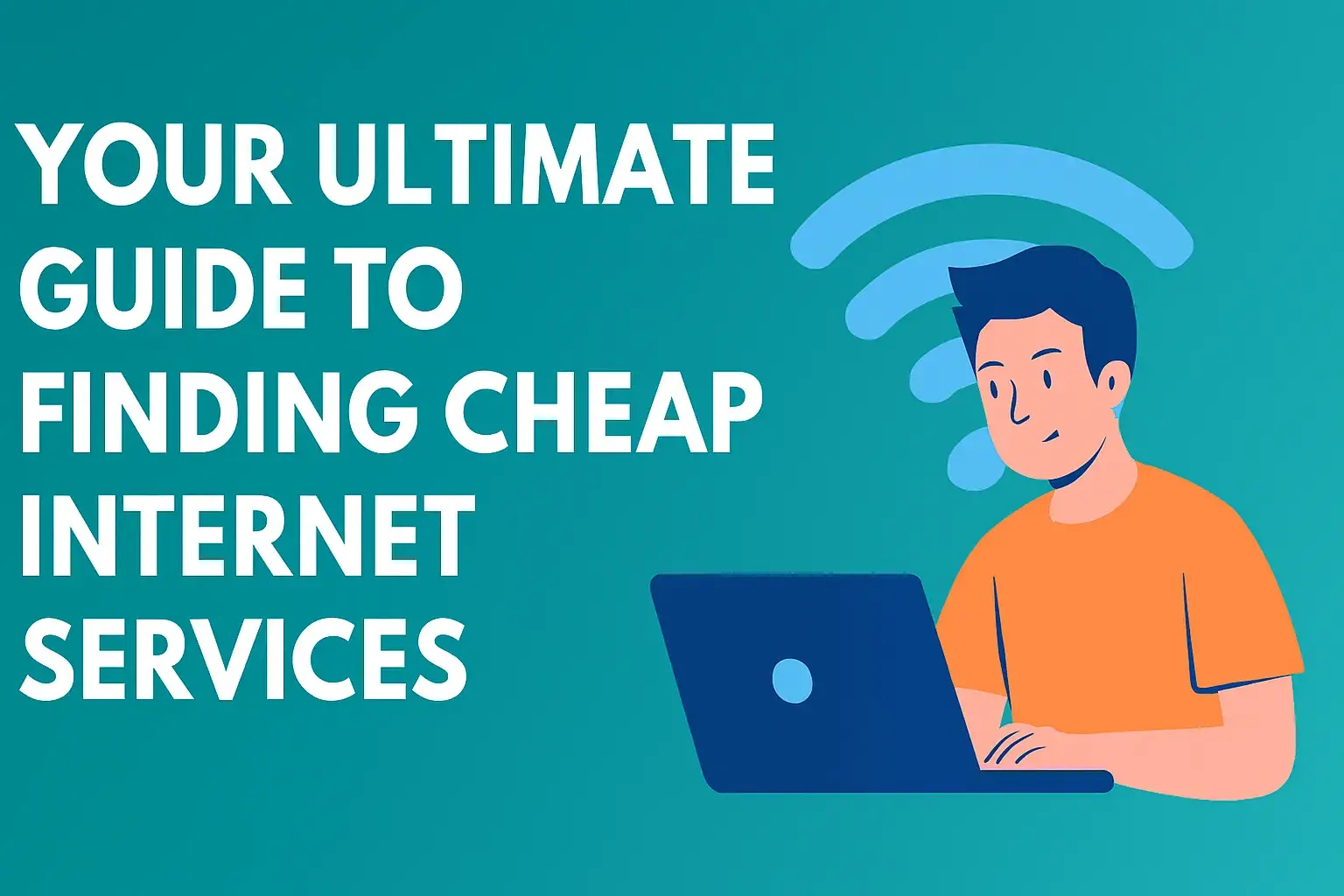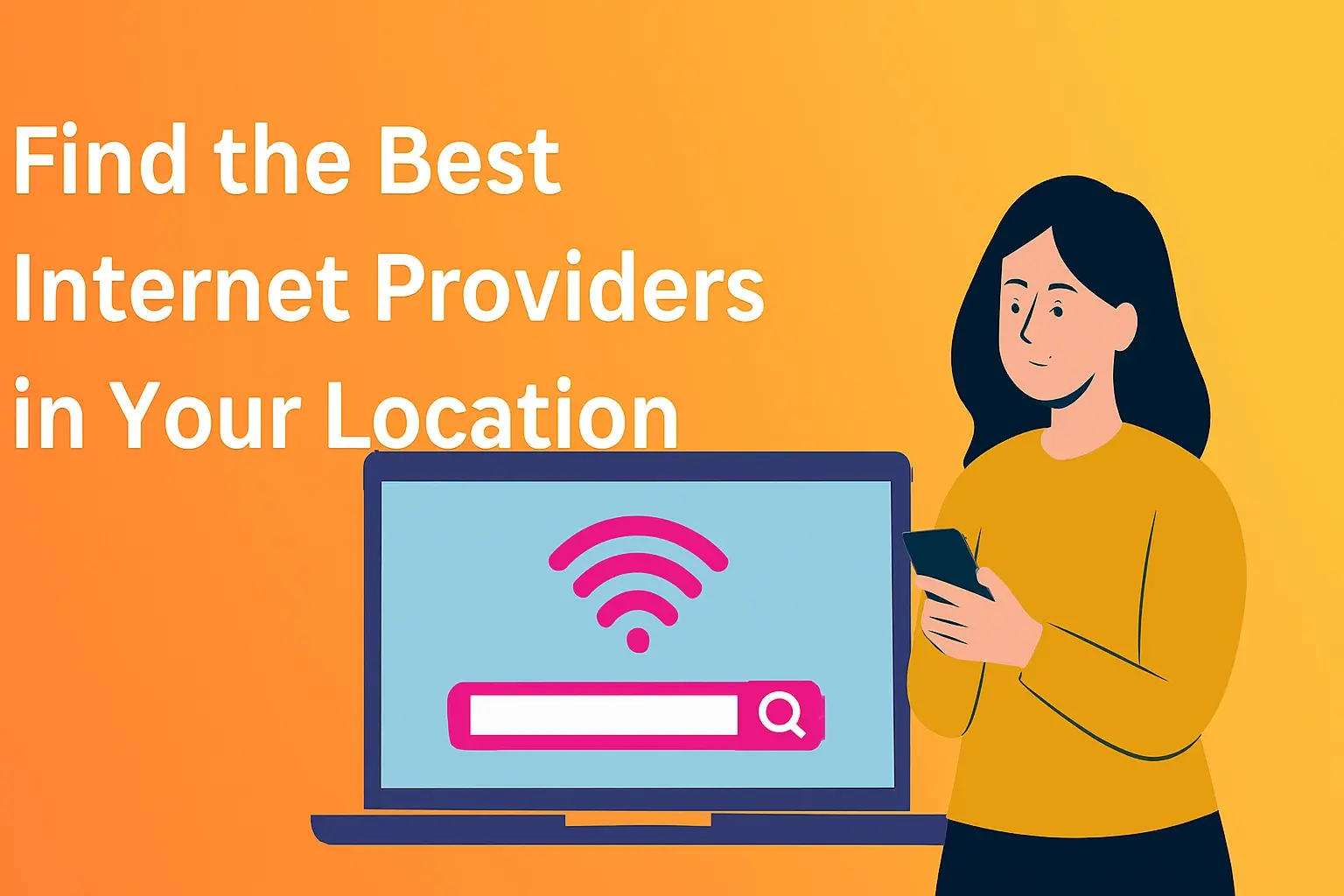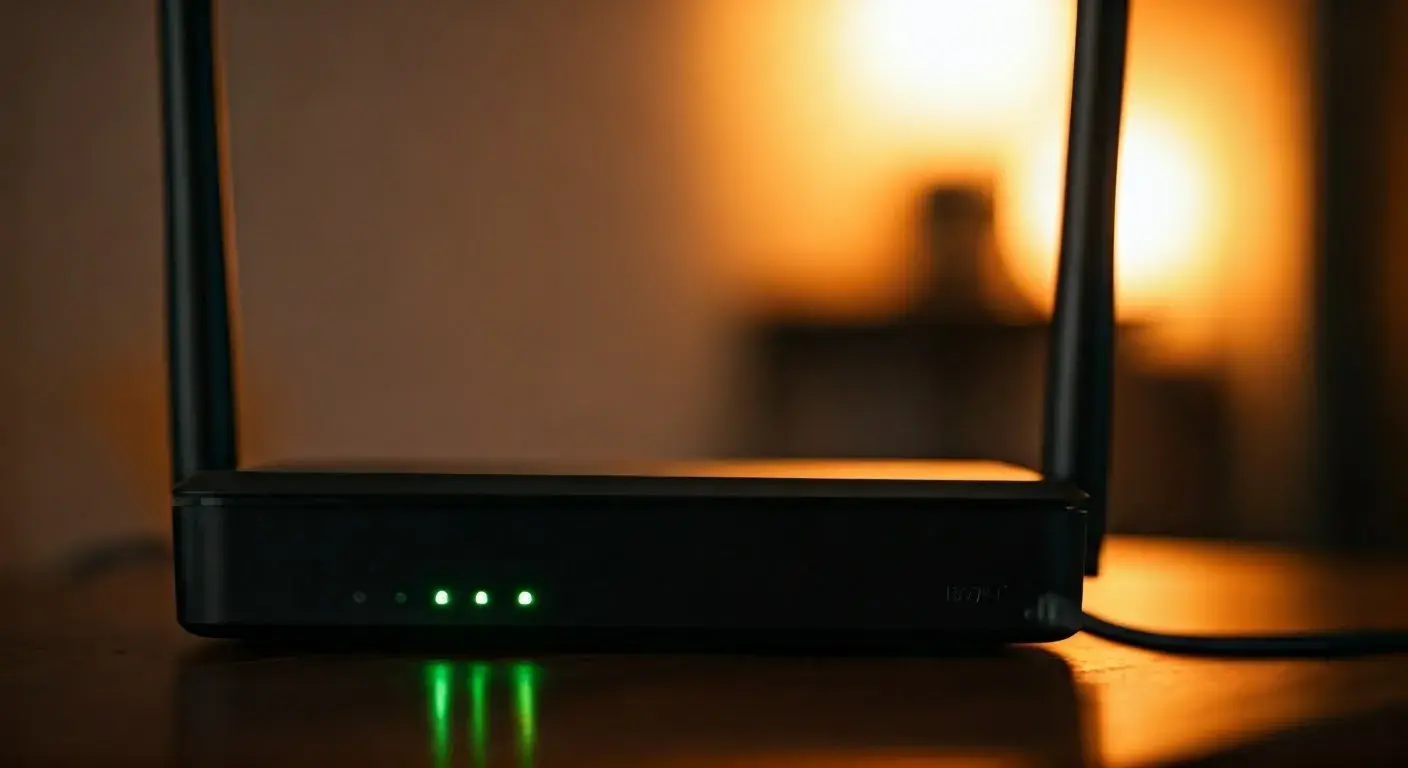How to Find the Best Internet Service Providers in Your Area

Navigating the complex world of internet service providers (ISPs) can be daunting. This guide will equip you with the essential knowledge and actionable steps to find the best internet service providers in your area, ensuring you get speed, reliability, and value tailored to your needs.
Understanding Your Internet Needs
Before you even begin to look at specific providers, the most crucial step is to thoroughly understand your household's internet usage patterns. This foundational step will prevent you from overpaying for services you don't need or, conversely, being frustrated by a plan that can't keep up with your demands. Consider the number of devices connected simultaneously, the primary activities performed online, and the overall number of users in your home.
Assessing Your Household's Usage Habits
Think about a typical day or week in your home. How many smartphones, tablets, laptops, smart TVs, gaming consoles, and smart home devices are usually connected to the internet? Each connected device consumes bandwidth. For example, a smart thermostat might use very little, while streaming 4K video on multiple devices simultaneously can demand significant bandwidth.
Streaming and Entertainment
If your household frequently streams movies and TV shows, especially in high definition (HD) or 4K, you'll need a plan with higher download speeds. For instance, streaming a single HD movie can require around 5 Mbps, while 4K streaming can demand 25 Mbps or more. If multiple people are streaming simultaneously, these numbers multiply rapidly. For a family that enjoys binge-watching or regularly uses services like Netflix, Hulu, or Disney+, a minimum of 100 Mbps is often recommended, with 200-500 Mbps being ideal for a seamless experience.
Online Gaming
Online gaming requires not only sufficient download speeds but also low latency (ping). High ping times can lead to lag, making fast-paced games unplayable. While download speeds for gaming might range from 10-25 Mbps, the stability of the connection and low latency are paramount. Fiber optic internet is often the preferred choice for serious gamers due to its superior performance in these areas. For competitive gaming, aim for download speeds of at least 50 Mbps and a ping below 50ms.
Remote Work and Online Learning
For those who work or study from home, a reliable and fast internet connection is non-negotiable. Video conferencing, uploading large files, and accessing cloud-based applications all require consistent bandwidth. For frequent video calls, a stable connection of at least 10 Mbps download and 5 Mbps upload is recommended. For heavy users who regularly upload large files or participate in multiple video conferences simultaneously, speeds of 100 Mbps download and 20 Mbps upload or higher are advisable. The stability of the upload speed is particularly critical for remote work.
Smart Home Devices
The proliferation of smart home devices – from smart speakers and thermostats to security cameras and smart appliances – adds to the overall internet traffic in your home. While individual devices may not consume much bandwidth, a large number of them can collectively strain your network. Ensure your plan can accommodate the growing number of connected devices without performance degradation.
Basic Internet Use
If your internet usage is primarily limited to checking email, browsing websites, and occasional social media use, you likely won't need the highest speeds. A plan with speeds between 25-50 Mbps might be perfectly adequate. However, it's often wise to opt for slightly more than your minimum perceived need to account for future growth in technology and usage.
Determining Your Speed Requirements
Based on the above considerations, you can start to quantify your speed needs. Here's a general guideline for download and upload speeds:
- Basic Use (Email, Browsing, Light Social Media): 25-50 Mbps download, 5-10 Mbps upload.
- Moderate Use (Streaming HD, Casual Gaming, Some Video Calls): 50-100 Mbps download, 10-20 Mbps upload.
- Heavy Use (4K Streaming, Frequent Gaming, Remote Work with Video Conferencing, Multiple Users): 100-500 Mbps download, 20-50 Mbps upload.
- Power Users (Extensive Gaming, Large File Transfers, Multiple 4K Streams, Large Households): 500+ Mbps download, 50+ Mbps upload.
Remember that these are general guidelines. Your actual needs may vary. It's often better to err on the side of caution and choose a slightly higher speed tier than you think you might need, as many providers offer introductory pricing that makes higher speeds more affordable.
Researching Providers in Your Area
Once you have a clear picture of your internet needs, the next step is to identify which internet service providers (ISPs) actually operate in your specific geographic location. Availability is the primary limiting factor, and it varies significantly by region, even within the same city.
Identifying Available Internet Technologies
The type of internet technology available in your area will heavily influence the speeds and reliability you can expect. The most common types include:
- DSL (Digital Subscriber Line): Uses existing telephone lines. Speeds vary greatly depending on distance from the provider's central office. Generally slower than cable or fiber.
- Cable Internet: Delivered via coaxial cables used for cable TV. Offers good speeds and is widely available in many urban and suburban areas.
- Fiber Optic Internet: Transmits data using light signals through glass fibers. Offers the fastest speeds, lowest latency, and highest reliability. Availability is growing but still limited in many areas.
- Satellite Internet: Transmits data via satellite dishes. Available almost anywhere with a clear view of the sky, but often comes with higher latency, data caps, and slower speeds compared to other technologies.
- Fixed Wireless Internet: Uses radio waves to connect a fixed antenna at your location to a nearby tower. Can be a good option in rural areas where other technologies are not available.
Utilizing Online Comparison Tools and Resources
The most efficient way to determine ISP availability is by using online tools. Reputable websites allow you to enter your zip code and street address to see a list of providers and plans servicing your location. These tools aggregate data from various ISPs, saving you the time of visiting each provider's website individually.
Some of the most popular and reliable resources include:
- BroadbandNow.com: A comprehensive platform that allows you to search by zip code and compare available plans, speeds, and pricing.
- HighSpeedInternet.com: Similar to BroadbandNow, offering a detailed comparison of ISPs based on your location.
- FCC Broadband Map: The Federal Communications Commission provides a national broadband map that shows fixed and mobile broadband availability, although it's sometimes less granular than private comparison sites.
When using these tools, pay close attention to the technology type offered by each provider. For example, if fiber optic is available, it's often worth prioritizing due to its superior performance. If only DSL is an option, understand its limitations regarding speed and distance.
Checking Directly with Major Providers
While comparison tools are excellent starting points, it's also wise to visit the websites of major national and regional ISPs directly. Sometimes, smaller or newer providers might not be fully integrated into all comparison databases. Key players to check often include:
- Comcast (Xfinity)
- Charter Communications (Spectrum)
- AT&T
- Verizon
- T-Mobile Home Internet
- Google Fiber (where available)
On their respective websites, you'll typically find an "Check Availability" or "Find Plans" section where you can input your address. This direct verification ensures you're getting the most up-to-date information on what's offered at your doorstep.
Considering Local and Regional ISPs
Don't overlook smaller, local, or regional ISPs. These providers can sometimes offer competitive pricing, more personalized customer service, or specialized plans that larger companies don't. They are particularly prevalent in areas where larger providers have less infrastructure. A quick search for "[Your City/Region] internet providers" might reveal these smaller players.
Understanding Geographic Limitations
It's important to be aware that even within a single city, ISP availability can differ significantly. For instance, one side of a street might have access to fiber optic internet, while the other side only has DSL or cable. This is often due to the physical infrastructure laid down by different companies over time. Therefore, always verify availability using your exact street address, not just your zip code.
Comparing Internet Plans and Speeds
With a list of available providers and technologies, the next step is to dive deep into the specifics of their plans. This involves understanding not just advertised speeds but also the nuances of different plan structures and the actual performance you can expect.
Download vs. Upload Speeds
Most marketing focuses heavily on download speeds, as this is what most users perceive as "internet speed" for activities like streaming and browsing. However, upload speeds are equally critical for certain tasks, such as video conferencing, uploading large files to cloud storage, online gaming, and live streaming. Ensure the plan you choose offers a balanced ratio of download to upload speeds that aligns with your usage.
Fiber Optic's Upload Advantage
Fiber optic internet typically offers symmetrical speeds, meaning upload speeds are as fast as download speeds. This is a significant advantage for users who rely heavily on uploading content or participating in real-time communications. For example, a 1 Gbps fiber plan will offer 1 Gbps download and 1 Gbps upload, a stark contrast to cable or DSL which often have much lower upload capabilities.
Cable and DSL Upload Limitations
Cable internet plans usually have significantly lower upload speeds than download speeds (e.g., 100 Mbps download might come with only 10 Mbps upload). DSL speeds are generally the slowest for both, and upload speeds are particularly limited. For most casual users, these limitations might not be a deal-breaker, but for professionals or heavy content creators, they can be a major bottleneck.
Understanding Bandwidth and Data Caps
Bandwidth refers to the maximum amount of data that can be transmitted over your internet connection in a given time. It's often measured in Mbps (megabits per second) or Gbps (gigabits per second). Your chosen plan's bandwidth determines how many devices can use the internet simultaneously without experiencing slowdowns.
Data Caps: Some ISPs impose data caps, which are limits on the amount of data you can download or upload within a billing cycle. Exceeding these caps can result in extra charges, throttled speeds, or even service interruption. Fiber optic and many cable plans increasingly offer unlimited data, but it's crucial to verify this. Satellite and some fixed wireless plans are notorious for having strict data caps. If your household streams a lot of video or downloads large files, unlimited data is highly recommended.
2025 Data Usage Statistics: As of 2025, the average US household consumes over 400 GB of data per month, with heavy users exceeding 1 TB. Streaming 4K video alone can consume up to 7 GB per hour. Therefore, if a plan has a data cap, ensure it's significantly higher than your estimated monthly usage.
Speed Tiers and Their Implications
ISPs offer various speed tiers, each corresponding to a different price point. It's essential to choose a tier that balances your needs with your budget. Don't automatically opt for the fastest plan available if you don't need it, as this can lead to unnecessary expenses. Conversely, don't choose a plan that's too slow, as this will result in a poor user experience.
Example Comparison Table (Hypothetical - 2025 Data)
| Provider | Technology | Download Speed | Upload Speed | Data Cap | Estimated Monthly Cost |
|---|---|---|---|---|---|
| FiberFast ISP | Fiber Optic | 1 Gbps | 1 Gbps | Unlimited | $70 - $90 |
| CableConnect Inc. | Cable | 500 Mbps | 20 Mbps | Unlimited | $60 - $80 |
| Speedy DSL | DSL | 100 Mbps | 10 Mbps | 1 TB | $50 - $70 |
| SkyLink Satellite | Satellite | 150 Mbps | 5 Mbps | 500 GB | $80 - $120 |
Note: Prices are estimates and can vary based on location, promotions, and contract terms.
Bundling Services
Many ISPs offer bundles that combine internet with TV and/or phone services. While these bundles can sometimes offer savings, it's essential to calculate if the bundled price is truly cheaper than purchasing services separately. If you don't need all the bundled services, you might end up paying for things you won't use. Analyze your needs for TV and phone separately before committing to a bundle.
Promotional vs. Standard Pricing
Be highly aware of promotional pricing. ISPs often lure new customers with attractive introductory rates that last for a limited period (e.g., 12 or 24 months). After the promotional period ends, the price can jump significantly. Always ask for the "regular" or "standard" price after the promotion expires to understand the long-term cost of the service. Make sure to factor this into your budget.
Evaluating Reliability and Customer Service
Speed and price are crucial, but the best internet plan is one that works consistently and is backed by responsive customer support. Reliability and customer service are often overlooked until a problem arises.
Understanding Uptime Guarantees and Performance Metrics
Reliability is often measured by uptime – the percentage of time the service is operational. While most ISPs aim for high uptime, some are more consistent than others. Look for ISPs that offer a Service Level Agreement (SLA) or a stated uptime guarantee, though these are more common for business plans. For residential services, you'll often need to rely on third-party reviews and reports.
Third-Party Reliability Reports
Websites that track internet performance often publish reports on ISP reliability. These reports are based on user-submitted data and independent testing. Look for data that indicates frequent outages, slow speeds during peak hours, or high latency. A consistent connection, especially during peak usage times (evenings and weekends), is vital.
Latency (Ping)
As mentioned earlier, latency, or ping, is the time it takes for data to travel from your device to a server and back. High latency can cause lag in online gaming and delays in video calls. Fiber optic internet generally offers the lowest latency, followed by cable, then DSL, and lastly satellite. If low latency is a priority, this metric should heavily influence your choice.
Researching Customer Service Reputation
When issues inevitably arise, how an ISP handles them can make or break your experience. Poor customer service can lead to prolonged outages, frustrating phone calls, and unresolved problems.
Online Reviews and Forums
Scour online review sites (like Yelp, Google Reviews, Trustpilot) and internet-specific forums (like Reddit's r/Internet or specific ISP subreddits) for customer feedback. Look for recurring complaints about:
- Long wait times for customer support.
- Unhelpful or untrained support staff.
- Difficulty resolving technical issues.
- Aggressive sales tactics or billing disputes.
- Lack of transparency regarding pricing or service changes.
Pay attention to how ISPs respond to negative reviews; a proactive and helpful response can sometimes be a good sign.
Consumer Reports and Ratings
Organizations like Consumer Reports often conduct surveys and publish ratings for ISPs based on customer satisfaction, reliability, and value. These reports can provide an objective overview of a provider's performance.
Installation and Equipment
Consider the installation process and any required equipment. Some ISPs require professional installation, which may incur a fee and require scheduling an appointment. Others offer self-installation kits. Also, understand if you are required to rent equipment (modem, router) from the ISP or if you can use your own. Renting equipment adds to your monthly bill, but using your own might require ensuring compatibility and handling troubleshooting yourself.
ISP-Provided Equipment
Renting a modem/router combo from your ISP can be convenient, as they are guaranteed to be compatible. However, these devices are often basic and may not offer the advanced features or performance of higher-end consumer-grade equipment. The monthly rental fees can also add up significantly over time. For example, renting a modem for $15/month for 5 years costs $900.
Using Your Own Equipment
Purchasing your own modem and router can be more cost-effective in the long run and offer better performance. Ensure any equipment you buy is on your ISP's approved list to avoid compatibility issues. This gives you more control over your network's capabilities and can sometimes provide better Wi-Fi coverage throughout your home.
Understanding Pricing and Fees
The advertised monthly price is rarely the final amount you'll pay. A thorough understanding of all potential costs is essential to avoid surprises and ensure you're getting the best value.
Hidden Fees and Surcharges
Be vigilant for common hidden fees, which can include:
- Installation Fees: Charges for setting up the service, especially if a technician visit is required.
- Equipment Rental Fees: Monthly charges for modems, routers, or TV set-top boxes.
- Activation Fees: A one-time charge for setting up your account.
- Regulatory Fees and Surcharges: Various government-mandated fees or administrative charges that ISPs pass on to consumers.
- Late Fees: Penalties for missing payment deadlines.
- Early Termination Fees (ETFs): Charges if you break a long-term contract before its expiration.
Always ask for a complete breakdown of all potential charges before signing up. Request a final quote that includes all fees and taxes for your specific plan and location.
Contract Lengths and Early Termination Fees (ETFs)
Many ISPs offer lower promotional rates in exchange for a long-term contract, typically 12, 24, or even 36 months. While this can lock in a lower price, it also means you'll face significant penalties if you need to cancel the service early, perhaps due to moving or finding a better deal. As of 2025, ETFs can range from $100 to $300 or more.
No-Contract Options: Some providers, particularly those offering 5G home internet or certain fiber plans, are increasingly offering no-contract options. These plans might have a slightly higher standard price but offer greater flexibility. Weigh the potential savings of a contract against the risk and cost of ETFs.
Promotional Offers and Discounts
Take full advantage of legitimate promotional offers. These can include:
- New Customer Discounts: Often the most significant savings available.
- Bundling Discounts: Savings when combining internet with TV or phone.
- Autopay/Paperless Billing Discounts: Small monthly savings for setting up automatic payments.
- Student or Military Discounts: Some providers offer specific discounts for these groups.
Always ask about current promotions and any eligibility requirements. Be sure to understand when these promotions end and what the standard rate will be afterward.
Comparing Total Cost of Ownership
To accurately compare different ISPs, calculate the total cost of ownership over a specific period, such as 12 or 24 months. This should include:
- Monthly service fee (after any promotional period).
- Equipment rental fees (if applicable).
- Installation and activation fees.
- Estimated taxes and other surcharges.
This comprehensive calculation will give you a true picture of which provider offers the best value for your money, not just the lowest advertised monthly price.
Making the Final Decision
You've done the research, understood your needs, and analyzed the plans. Now it's time to make an informed choice. This section consolidates your findings and provides a framework for the final selection.
Reviewing Your Top Contenders
By now, you should have narrowed down your options to two or three ISPs that meet your basic requirements for availability, speed, and technology. Create a final comparison list focusing on the key factors that matter most to you.
Key Decision Factors Checklist
- Speed Requirements Met: Does the plan offer sufficient download and upload speeds for your household's needs?
- Reliability: What is the general reputation for uptime and consistent performance?
- Customer Service: What do reviews suggest about their support quality and responsiveness?
- Total Monthly Cost: Including all fees, taxes, and after any promotional period ends.
- Contract Terms: Are you comfortable with the contract length and ETF?
- Data Caps: Are there any data limits, and are they sufficient for your usage?
- Technology Type: Is it the best available technology (e.g., fiber)?
Reading the Fine Print
Before signing any agreement, thoroughly read the terms of service and contract. Pay special attention to clauses regarding:
- Price increases after the promotional period.
- Data usage policies and overage charges.
- Early termination fees and conditions.
- Service guarantees or warranties.
- Privacy policies regarding your data.
Don't hesitate to ask the sales representative to clarify any points you don't understand.
Negotiating for Better Deals
It's often possible to negotiate with ISPs, especially if you have competing offers from other providers. When speaking with a sales representative, mention any lower prices or better deals you've found elsewhere. You might be able to secure:
- A longer promotional discount period.
- A waiver of installation or activation fees.
- A lower monthly rate.
- A free equipment upgrade.
Be polite but firm. Having concrete offers from competitors in hand can significantly strengthen your negotiating position.
Placing Your Order and Scheduling Installation
Once you've made your decision and are satisfied with the terms, proceed with placing your order. Confirm the installation date and time, and ensure someone over 18 will be present at the location. Have your payment information ready.
Post-Installation Testing
After the service is installed, it's crucial to test its performance. Run speed tests (using sites like Speedtest.net or Fast.com) at different times of the day to ensure you're receiving the speeds you're paying for. Test Wi-Fi coverage throughout your home. If you encounter any issues or the performance doesn't meet expectations, contact customer support immediately to address the problem while the installation is still fresh.
By following these comprehensive steps, you can confidently navigate the landscape of internet service providers and secure a connection that perfectly suits your household's needs, budget, and expectations for performance and reliability in 2025 and beyond.
Finding the best internet service provider (ISP) in your area involves a systematic approach, from understanding your unique needs to comparing available plans and evaluating provider reliability. This guide provides a detailed roadmap to ensure you secure a high-quality internet connection that offers the best value and performance for your home in 2025.
Prioritize identifying your household's specific internet usage patterns – streaming, gaming, remote work, and the number of connected devices – to determine the required speeds and bandwidth. Then, leverage online comparison tools and direct provider checks to discover available technologies like fiber, cable, or DSL in your specific location. Critically assess download and upload speeds, data caps, and the long-term costs, factoring in promotional pricing and hidden fees. Don't underestimate the importance of reliability and customer service, as indicated by independent reviews and reports. By meticulously comparing these factors and carefully reading the fine print, you can make an informed decision that ensures consistent performance, excellent value, and a hassle-free internet experience. Take the time to negotiate, test thoroughly post-installation, and you'll be well-equipped to enjoy the optimal internet service for your needs.





